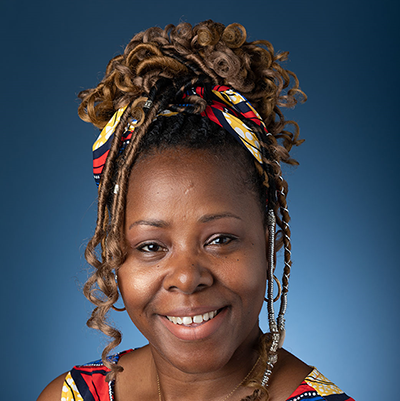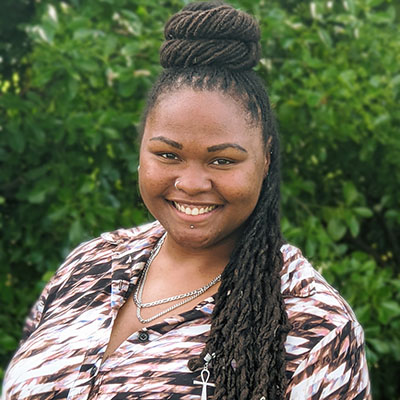Diversity, Equity, and Inclusion (DEI)

Leading with Intention to Promote Diversity, Equity & Inclusion
September 8, 2020 | Margaret Carlock-Russo
After July’s virtual member meeting, members told us they wanted to learn more about AATA’s next steps in promoting diversity, equity and inclusion (DE&I)—and hear more from Gary Smith, our DE&I consultant. In response, we are excited to share with you this webinar, “Leading with Intention to Promote Diversity, Equity & Inclusion.” Gary put our conversation into this current reality, referring to the Coronavirus pandemic and the unprecedented activism after George Floyd’s horrific killing. While we are defining diversity broadly, he posited in this moment, we may consider focusing on race.

A Colorful Canvas
July 30, 2020 | Louvenia Jackson
Why do we need racial diversity, equity and inclusion? Let’s think about a muslin canvas frame. Many painting frames are created for white canvases. What if the creation existed on a colored background, with many colors depicted on it? The narrative of the art changes, allowing for different perspective to arise with complexity, intrigue, and without colonization. We must not just add color to a white base; we need to change the base. One perspective cannot be the base for all others to exist or be cultivated by.

It’s Black, Indigenous, People of Color Mental Health Month
July2, 2020
July is known as Minority Mental Health Month and, more recently, people have been using the more inclusive term, Black, Indigenous, People of Color (BIPOC) Mental Health Month. As Mental Health America puts it, “The continued use of ‘minority or marginalized’ sets up BIPOC communities in terms of their quantity instead of their quality and removes their personhood…The word ‘minority’ also emphasizes the power differential between ‘majority’ and ‘minority’ groups and can make BIPOC feel as though ‘minority’ is synonymous with inferiority.”

Honoring Pride and BLM: An Art Therapy Perspective
June 30, 2020 | Gabrielle Cooper
As art therapists, it is our duty to stay up to date on social issues and how they affect our clients. Black people, LGBTQIA+ people, and those with intersecting identities are especially traumatized by the videos and knowledge of the what is continuing to happen in America today. Right now is a perfect time for art therapists to show how much we care and support this movement by centering the voices of the most marginalized, evaluating our personal biases, and advocating for our clients.

The Healing Quilt: A Project to Benefit the Pearlie Roberson Scholarship Fund
June 17, 2020 | Multicultural Committee
Coming soon! AATA’s Multicultural Committee is launching a digital art project for which we encourage art therapy professionals, students, local chapters, and graduate and undergraduate programs to contribute a digital copy of an artwork for our project, The Healing Quilt.

Statement by the American Art Therapy Association on the Death of George Floyd
May 28, 2020
As mental health professionals, art therapists see the dreadful effects of racism in our communities every day. This week, our nation witnessed via bystander video the exceptionally horrific death of George Floyd. A police officer pinned Mr. Floyd down to the ground with his knee, applying his full body weight to his neck for four more minutes after he had stopped moving. Mr. Floyd’s last words were, “I can’t breathe.”

Statement from the AATA Diversity, Equity, and Inclusion Committee: Revisiting our Values during the Coronavirus Pandemic
May 5, 2020 | AATA Diversity, Equity, and Inclusion Committee
As art therapists, we value the essential need for the individuals, families, and communities we serve to have access to healthcare services and treatment no matter their ethnicity, socioeconomic status, age, location, gender, disability status, and sexual orientation.

Antiracist Approach to Art Therapy: Re-examining Core Concepts
February 26, 2020 | Jordan S. Potash
As a White art therapist who has worked cross-racially for almost my entire career, I am regularly reminded that there are always racial-social-political influences that enter into the art therapy relationship. My current work in an open art therapy studio at a drop-in center for runaway and homeless adolescents and young adults, most of whom are Black, reinforces three strategies for art therapists for understanding and responding to power differentials.

3 Ways for Therapists to Address Barriers to Seeking Therapy
February 25, 2020 | Angela Roman Clack
I am pleased to participate in this blog series reemphasizing the themes covered in the “Breaking the Chains of Racial Trauma in Therapy” panel at the AATA’s 50th conference . In the panel presentation, I shared examples from my work with Black women to demonstrate how racism contributes to a denial of one’s psychological stress or acknowledgement of how therapy could be beneficial. Living life in black skin is an undeniable racialized existence.

Creative Healing Spaces: Healing From Racial Wounds
February 24, 2020 | Lindsey Vance
Growing up in a community that did not speak of mental health care or seeing a therapist, this idea of a career path was foreign to me. Explaining to my family that I was going to be an Art Therapist was even more so confusing, however I went on to be one. The privilege to work in various clinical and community-based settings afforded me the opportunity to recognize that I was not alone in my childhood stigma of misunderstanding and distrust for psychotherapy, but rather various clients of color shared this same belief.
